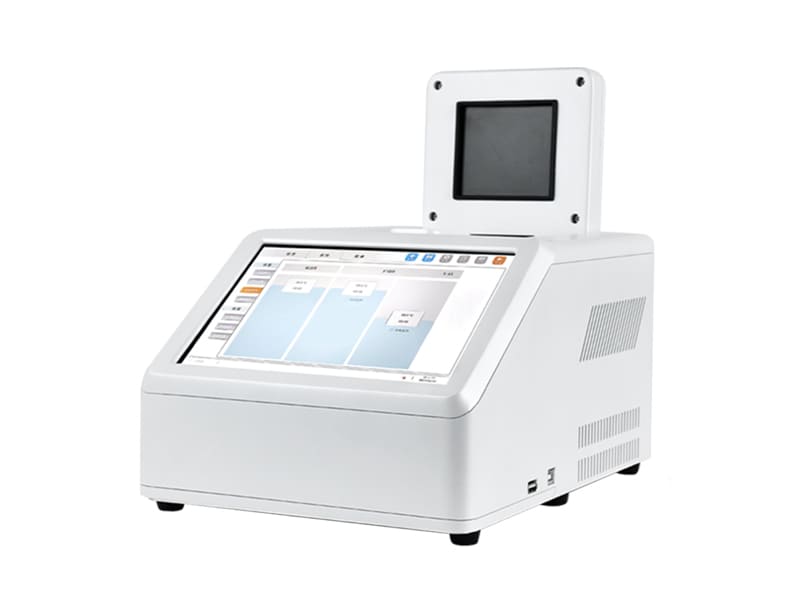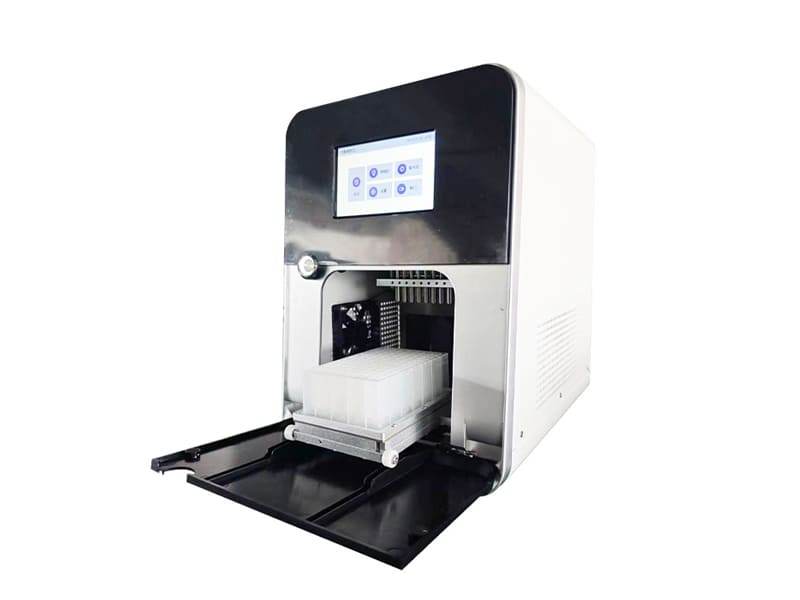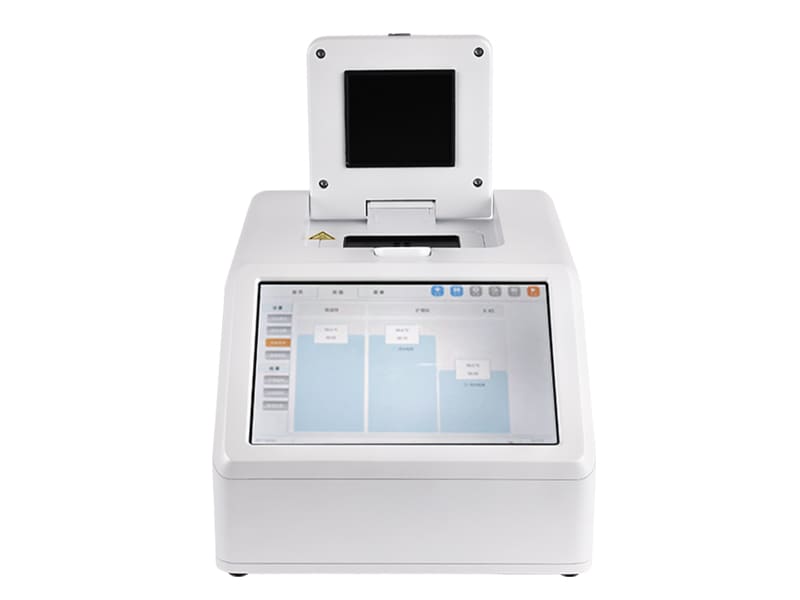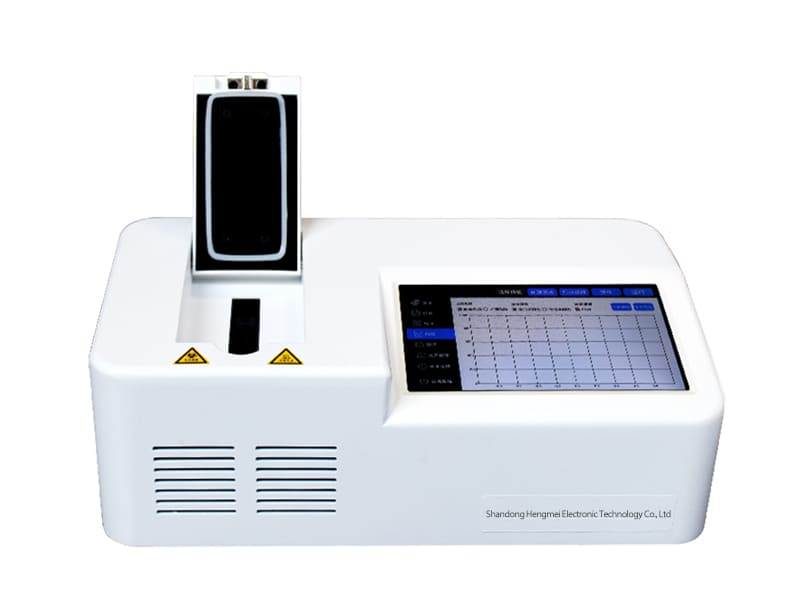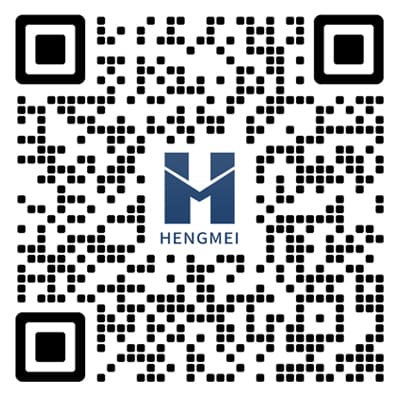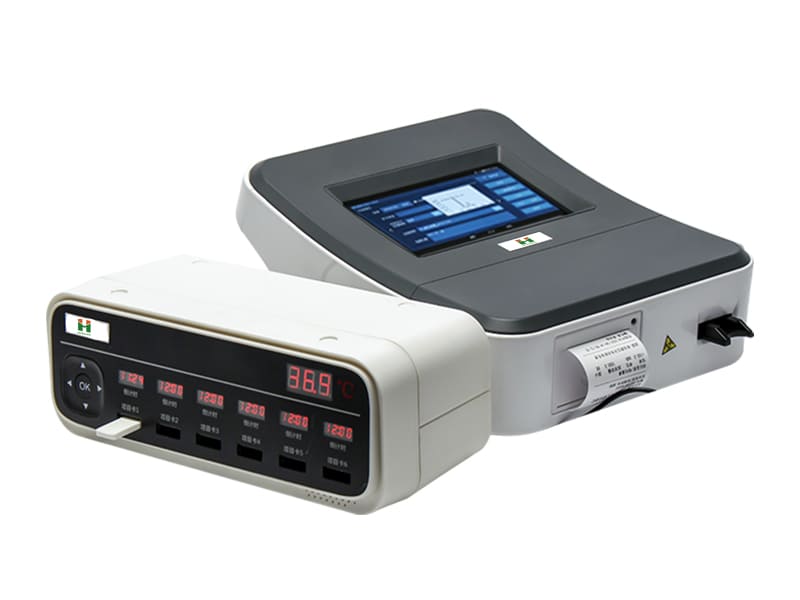
Product Introduction:
The HM-L02 fluorescence quantitative mycotoxin detector adopts the principle of fluorescence quantitative rapid detection, mainly detecting the content of mycotoxins in grain, oil, and feed, including aflatoxin B1, aflatoxin M1, zearalenone, vomiting toxin, fumatoxin, etc. The detection samples cover grains (rice, corn, wheat, barley, sorghum, etc.) and their products, feed and its raw materials, edible oils, milk, and their products, etc; The sample pre-treatment is simple, and the entire testing process takes 12 minutes. The product is suitable for local grain depots, grain production enterprises, feed factories, various animal husbandry and breeding enterprises, flour mills, food processing plants, third-party testing institutions, and government regulatory departments at all levels.
Product features:
1. Extremely stable: Imported fluorescent microspheres are used with uniform particles, ensuring good product stability from the source and good reproducibility within and between batches. The reagent strip can be stored at room temperature without the need for refrigeration. After testing, the reagent strip can be dried and stored for one year to achieve traceability of results. Adopting a thermostat device, with one hole per strip, automatic timing, unaffected by external temperature and humidity, suitable for a wider range of fields.
2. Fast and accurate quantification: Combining the characteristics of colloidal gold, enzyme-linked immunosorbent assay, and chromatographic accurate detection, achieving fast and accurate quantitative detection;
3. Built in quantitative standard curve: The instrument has a built-in standard curve, which does not require the use of standard products. There is no need to make a standard curve during testing, which not only saves costs but also avoids contact between operators and vomiting toxins, protecting the safety of operators;
4. On arrival testing: There is no requirement for the sample size of the test, and it can be tested on a single or small number of samples, or on a large number of samples simultaneously, and on-site testing can be achieved;
5. Low requirements for supporting equipment: The requirements for supporting pre-treatment instruments, equipment, and personnel are low, and operators only need short-term training to become proficient;
6. High cost-effectiveness: Spending one-third of the price of imported equipment, obtaining the quality and results of chromatographic testing, and saving manpower and material resources, significantly reducing testing costs.
7. Easy and convenient to use: The instrument has a built-in detection project operation video, without the need for professional training. While watching the instrument's built-in operation video, you can conduct experiments and get started easily and quickly.
8. Professional and worry free: The sample curve can be customized according to user needs, and curve information can be remotely and wirelessly pushed without the need to return the instrument to the factory.
Technical parameters:
1. Measurement principle: Read the fluorescence quantitative detection card, compare the fluorescence signal intensity of the detection area (T-line), quality control area (C-line) and background area, and calculate the content of the target substance based on the standard curve built-in in the detection card.
2. Instrument display: 7-inch 1200 * 1920IPS screen display, no need for external computer;
3. Operating system: Android operating system, 1.5GHz eight core processor, 2GB of running memory,
4. Printing: The instrument comes with a thermal printer, and the detection results can be printed in real time.
5. Instrument measurement repeatability: ≤ 0.4%, stability: ≤ 0.6%
6. Repeatability CV of the same test strip ≤ 0.4%
7. Precision CV between instruments ≤ 3%
8. Light source: laser light source, 475nm, 525nm
9. Detector: Photocell
10. When reading the signal, the scanning distance is 20mm, and the scanning range is at least 2mm on the outer side of the C and T lines. The CT line position can be customized and accurately recognized.
11. Detection and interpretation: The instrument has a power on self-test function, and the detection card interpretation is completed within 12 seconds. The detection time for a single sample is less than 8 seconds.
12. Detection method: Automatic scanning.
13. The instrument automatically recognizes the detection items, sample types, detection limits, and standard curves on the barcode of the detection card, forming a complete detection data information chain. One card, one control. After inserting the card, the instrument automatically reads the fluorescence signals of the C and T lines displayed on the detection card, and calculates the results automatically based on the standard curve built-in on the detection card; Users can choose to set detection limits/quantification limits (internal control or national standard limits) according to their own needs.
14. Testing data information collection projects (including but not limited to): The instrument should support at least the following testing data collection: ① Testing projects; ② Sample type; ③ Test samples; ④ National limit; ⑤ Tested by: ⑥ Testing unit; ⑦ Detection time; ⑧ Detection line/quantification limit; ⑨ Detection number; 10 Internal control limit;? Sample sources, and support for remote expansion and upgrading of data collection projects.
15. Testing data collection method: The items ① - ⑨ specified in the testing data information collection project are automatically recognized and collected by the instrument, and the items 10-? The item is handwritten input.
16. Testing data upload method: After completing the testing, the instrument can automatically upload all the testing data information specified in the testing data collection project to the testing supervision system platform.
17. Interface: Bluetooth communication interface; Built in wireless WIFI, the detection data is transmitted in real-time to the data supervision platform, and customers can log in to the network through their account to view the detection data in real time.
18. Storage space: 16GB of storage space.
19. Information input: Supports handwriting input in both Chinese and English.
20. Local data management: It has functions such as detecting data storage, querying, batch data deletion, and printing.
21. Testing project management: The instrument supports maintenance and management of testing projects and corresponding national limit remote addition, deletion, etc.
22. Operation permission management: The instrument supports the function of detecting operators to log in to the instrument using accounts and passwords, and supports account and password verification on the regulatory system platform.
23. Training and learning: Built in detection project operation process video, teaching software can be updated online in real-time.
24. Working temperature: 5-40 ℃, relative humidity: 10% -90%. Power supply voltage 220V ± 22V, frequency 50Hz ± 1Hz, rated power 40W, connection with power supply: detachable power cord.
25. Constant temperature incubator
(1) Suitable for quantitative colloidal gold test strips and reaction liquids * * temperature controlled reactions to improve accuracy;
(2) There are 6 slots in the incubator, and the time of each slot is independently controlled;
(3) After inserting the card strip, the countdown will automatically start, and when the countdown ends, an alarm will be triggered and the timeout time will be recorded;
(4) Internal constant temperature control, temperature control: 37 ℃, temperature control accuracy ≤ 0.5 ℃, heating speed ≤ 8 minutes, temperature uniformity ≤ 0.3 ℃, real-time temperature display accuracy: 0.1 ℃.
26. Instrument size: 340 * 280 * 140mm
Testing items
Serial Number | project | Quantitative detection limit | Quantitative detection range |
1 | Deoxynivalenol(DON) | 100ppb | 100-5000ppb |
2 | AflatoxinB1(AFB1) | 2ppb | 2-100ppb |
3 | Aflatoxin m1(AFM1) | 0.1ppb | 0.1-2ppb |
4 | Zearalenone(ZEN) | 5ppb | 5-250ppb |
5 | Fuma toxin(FB1) | 100ppb | 100-5000ppb |
- Previous: no more
- Next: no more



 Current
Location:
Current
Location: +86 17853698681
+86 17853698681 WhatsApp
WhatsApp Product Details
Product Details Related Products
Related Products